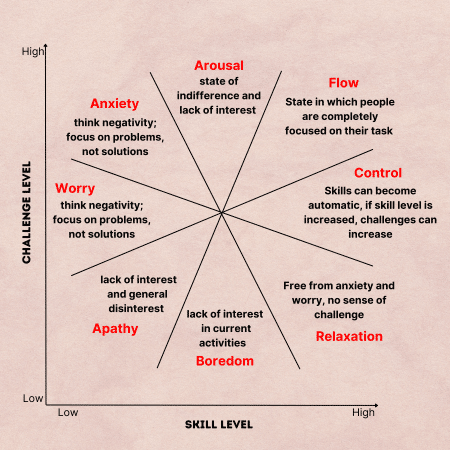Digitisation is flattening traditional services businesses and driving customer engagement and loyalty to the top of executive attention. Understanding flow unpacks the how.

As service industries such as finance, health and energy are flattened by digitisation, regulation, competition from agile, innovative and cashed up technology competitors and a growing interest in planetary and financial wellness, customer engagement is rapidly climbing to the top of the list of priorities of executives looking to acquire and retain customers. For those for whom this is true, understanding the rules for engagement become mandatory study.
Mihály Csíkszentmihályi (pronounced “Me high? Cheeks sent me high! “) was the head of psychology at the University of Chicago and is most well known for his work on “The Flow”. This work unpacks what it takes to be fully engaged.

At the heart of his study is a model that defines flow. At its center is the idea that to be in flow, the challenge presented needs to be just slightly ahead of the skill level of the player. In this way the challenge builds skill, enabling the “player” to take on the next challenge. When the skill and challenge are mismatched the player falls out of the flow. When challenge and skill are well matched the player becomes engaged.
In addition to challenge and skill being matched Mihaly stipulates two additional conditions in order to create flow and therefore engagement
1. There are clear goals every step of the way. Wellness, whether financial, physical, mental or planetary, brings many many demands, many of which forgoing instant gratification in deference for some future benefit. Given our present bias, where we overly discount future benefit, an engaging experience requires a clear purpose, providing the player with a sound understanding of what they get and what to do to get it. When services are provided as a mere utility, using ease of use as a design principle, as with many banking or health experiences today, this is not true: there are no clear goals and calls to action. Most budgeting tools available on the market today are classic examples of this rule being failed.
2. There is immediate feedback to one’s actions. When you’re in flow, you know how well you’re doing. Whilst most finance, health and energy applications provide transaction feedback, confirming a transaction, the customer is rarely left knowing whether what they did was right, wrong or indifferent. Money and wellness generally is complex, with many left not understanding the rules or whether what they are doing is correct. To get customers engaged this must change. We need to provide more feedback, particularly feedback that leverages games to orient customers around skill building, getting better and winning.
Owen Schaffer of DePaul university extends this work in stating that “Making designs more fun is a key strategy that allows companies to engage their customers and give them an experience that will have them wanting to come back again and again . He augments Mihaly’s work by adding that customers must know

- What to do.
- How to do it.
- How well they are doing.
Ease of use as a design paradigm doesn’t solve these issues. They assume the user knows these things . The reality of many peoples financial situations, literacy and the tools they are using (banking apps) sees them left out of the flow and dis-engaged.
There is much work to be done to move the dial. The application of flow and game design is key to the task at hand.
Moroku’s On-Ramp methodology presents utilities and commoditised companies with the opportunity to create an innovative digital road-map centered around customer engagement and success. It is targeted at those organisations who, in the face of regulation and digital challengers are looking to change the game by firstly understanding the rules of engagement beyond “Ease of Use”
For an obligation free discussion on how the process works and how you can access it please get in touch